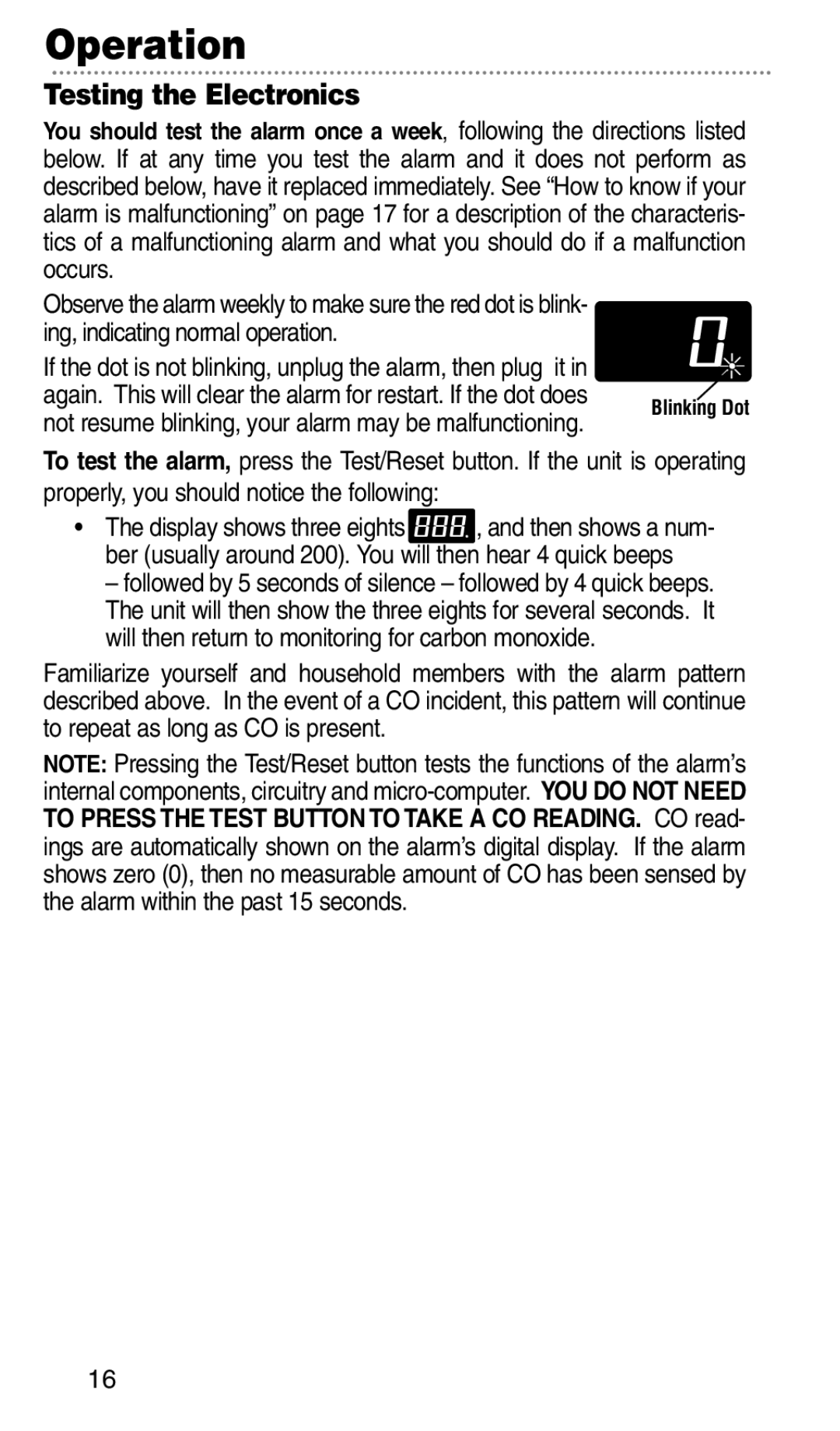
Operation
Testing the Electronics
You should test the alarm once a week, following the directions listed below. If at any time you test the alarm and it does not perform as described below, have it replaced immediately. See “How to know if your alarm is malfunctioning” on page 17 for a description of the characteris- tics of a malfunctioning alarm and what you should do if a malfunction occurs.
Observe the alarm weekly to make sure the red dot is blink- ing, indicating normal operation.
If the dot is not blinking, unplug the alarm, then plug it in |
| |
again. This will clear the alarm for restart. If the dot does | Blinking Dot | |
not resume blinking, your alarm may be malfunctioning. | ||
|
To test the alarm, press the Test/Reset button. If the unit is operating properly, you should notice the following:
•The display shows three eights![]() , and then shows a num- ber (usually around 200). You will then hear 4 quick beeps
, and then shows a num- ber (usually around 200). You will then hear 4 quick beeps
– followed by 5 seconds of silence – followed by 4 quick beeps. The unit will then show the three eights for several seconds. It will then return to monitoring for carbon monoxide.
Familiarize yourself and household members with the alarm pattern described above. In the event of a CO incident, this pattern will continue to repeat as long as CO is present.
NOTE: Pressing the Test/Reset button tests the functions of the alarm’s internal components, circuitry and
16
